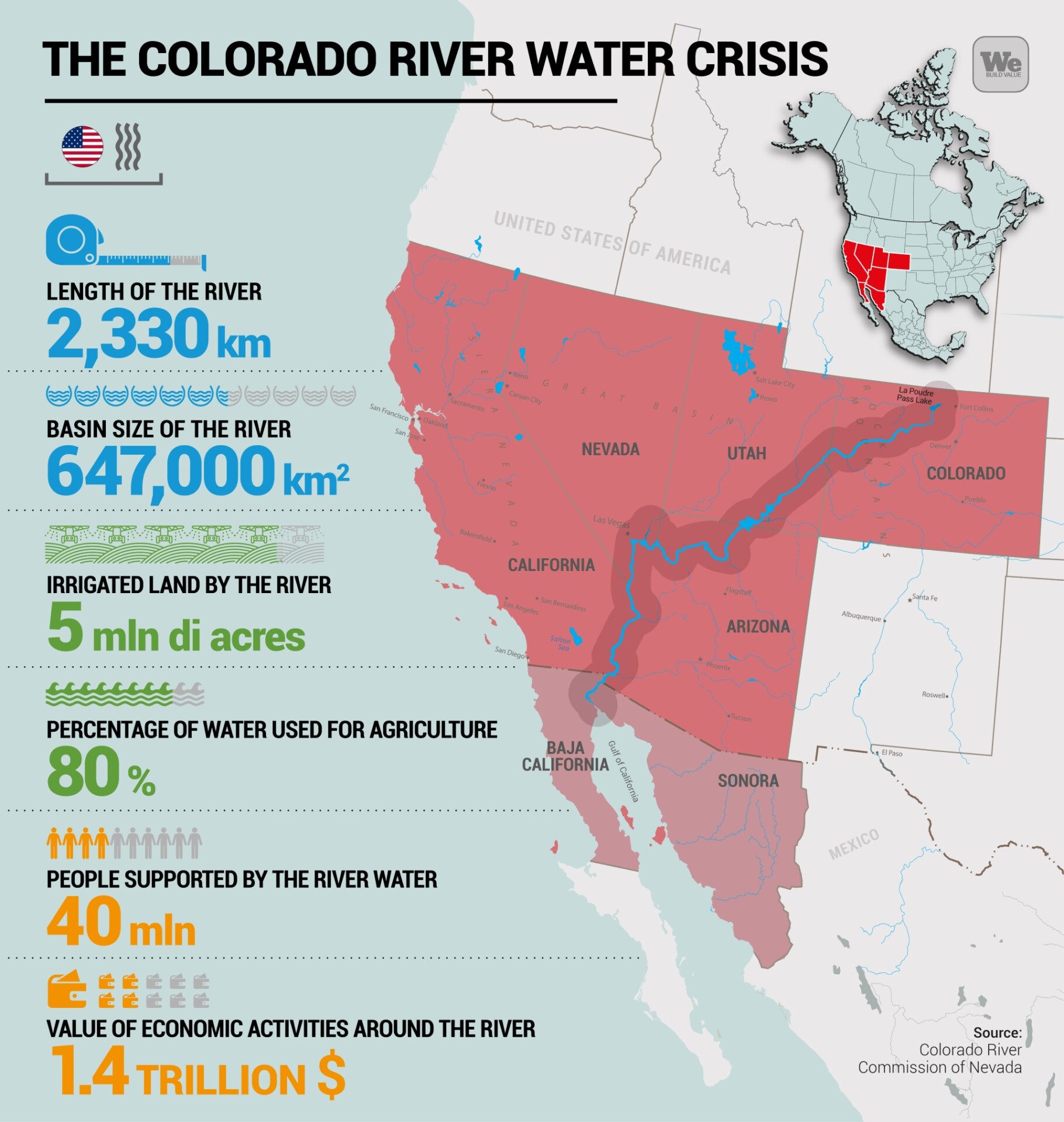Every drop of water counts. The message from Phoenix, Arizona, sounds like an alarm bell for the entire United States, calling the attention of citizens, businesses, and public agencies to not waste water resources. In the nation’s fifth-largest city, by population, and one of the fastest-growing metropolitan areas, the construction of new homes is now subject to restrictions imposed by the state administration. Arizona Governor Katie Hobbs announced that the halt on new home construction, with plans for tens of thousands of homes in the area, aims to protect groundwater reserves.
“For generations, groundwater has supported Arizona communities. In times of scarcity, groundwater is the only available water resource, so we must manage it wisely,” said Hobbs. The decision by the state is guided by a projection from the Arizona Department of Water Resources, which states that without further actions, the demand in the Phoenix metropolitan area would not be met in the next 100 years.
Arizona drought: a river for eight states
Arizona, along with California and Nevada, is one of three states that have recently reached an agreement to reduce millions of liters of water consumption from the Colorado River by 2026. The amount of water covered by the agreement is equivalent to six million Olympic-sized swimming pools. Over 40 million people in seven states (Colorado, New Mexico, Utah, Wyoming, Arizona, Nevada, California) depend on the river for drinking water and energy generation. Prolonged periods of drought have lowered water levels beyond risk limits, to the extent that the Intake 3, also known as the “third straw,” built by Webuild in collaboration with its American subsidiary Lane Construction at Lake Mead, the reservoir created by the Hoover Dam, has been activated multiple times.
The levels of the river and the lake have progressively declined due to climate change and increased demand from cities and farmers. The Intake 3, which became operational seven years ago, is one of the most significant engineering works ever built for water management in the United States. It is a hydraulic tunnel located in the center of the lake, designed to supply water to Las Vegas and surrounding areas. When the water level falls below a predetermined limit, the straw pumps water from underground and restores the Colorado River‘s flow to acceptable levels, which alone provides drinking water to approximately 10% of the national population.
In light of the positive downstream effects of the Lake Mead Intake and other water management solutions, Hobbs has urged her fellow citizens to make better use of this precious resource. “No one who has water in Arizona will lose their water. But if we do nothing, in the next 100 years, we could face a 4% shortage in groundwater reserves. We must bridge this gap and find efficiencies in our water use, manage our aquifers wisely, and increase our use of renewable sources,” she added.
Water rationing to protect the future
Based on a state law enacted in 1980 to protect the state’s aquifers, Phoenix, Tucson, and other cities in Arizona have restrictions on the amount of groundwater they can pump. However, in rural areas, there are few limitations and sometimes even fewer controls. The report from the Arizona Department of Water Resources and the subsequent state decision have served as a wake-up call, both for those responsible for oversight and for those who have previously used water outside the rules. This is an area that has experienced rampant urban development around Phoenix, with over 5 million people, becoming a hot spot for new residents and high-tech businesses in the desert.
The alarm regarding the sustainable use of water had already been raised in previous months by the central government, which allocated $50 billion for water-related interventions as part of the infrastructure plan. According to the American Society of Civil Engineers (ASCE), the United States has a water distribution network that stretches 2.2 million miles (3.5 million km), capable of transporting millions of tons of water every day. Despite its extensive coverage, the system is old and full of leaks.
The ASCE also states that in America, where 150 billion liters of water are consumed each day to support residential, commercial, and industrial use, a water network failure occurs every two minutes, resulting in a daily loss of 6 billion gallons (22 billion liters), equivalent to 9,000 swimming pools. In 2020 alone, maintenance work led to the replacement of 12,000 miles (19,000 km) of pipelines dedicated to transporting drinking water. Two-thirds of the drinking water in the United States comes from surface water sources such as rivers, lakes, reservoirs, and oceans, while one-third comes from groundwater.
Webuild's role in US water management
After the completion of the third straw at Lake Mead, Webuild and Lane have intensified their activities in the country, constructing significant water management infrastructure projects and promoting the distribution of clean water, starting with the capital. Like many American cities, often built according to a similar model, Washington, D.C. has been affected by an outdated and clogged sewer system due to frequent rainfall, which, combined with untreated water, has created a toxic mix for the capital. As part of the Clean Rivers Project, Webuild has built an innovative hydraulic tunnel beneath the Anacostia River, a tributary of the Potomac, allowing separate conveyance of wastewater and stormwater, thereby cleaning the city.
Thus, the achievements and ongoing projects by Webuild and Lane span various corners of the country, from the Dugway Storage Tunnel in Ohio to reduce wastewater discharge into the environment and store treated water, to the Kuwahee Water Treatment Plant to regulate sanitary sewer flows into the Tennessee River, the Ship Canal Water Quality Project to manage stormwater and wastewater in Seattle, the Three Rivers Protection & Overflow Reduction Tunnel to improve rivers and the city of Fort Wayne, Indiana, and the West Side CSO Tunnel Project to enhance water use for the population of Portland, Oregon.


